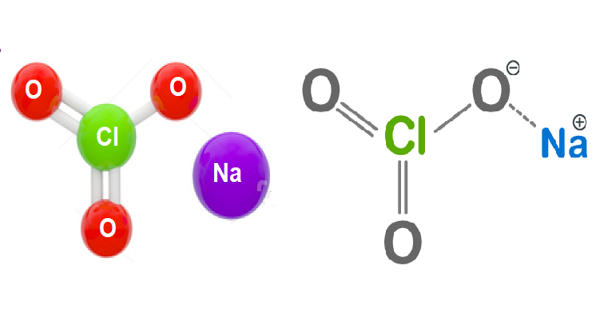Some countries are leading the shift to green energy because they have made a commitment to reducing their carbon emissions in order to address climate change. Additionally, many countries have recognized the economic benefits of investing in renewable energy sources, as they can provide jobs and stimulate economic growth. Government policies, such as financial incentives for renewable energy development and regulations to phase out fossil fuels, have also played a role in encouraging the shift to green energy in certain countries.
A new study identifies the political factors that allow some countries to lead in the adoption of cleaner energy sources while others lag. The study reveals how the structure of political institutions can help or hinder the transition to clean energy by analyzing how different countries responded to the current energy crisis and the oil crisis of the 1970s. The findings provide critical lessons as governments race to reduce the effects of climate change.
Following Russia’s invasion of Ukraine in spring 2022, oil and gas prices skyrocketed, resulting in a global energy crisis akin to the 1970s oil crisis. While some countries used the price shock to accelerate the transition to cleaner sources of energy, such as wind, solar and geothermal, others have responded by expanding the production of fossil fuels.
A new study published this week in the journal Science identifies the political factors that allow some countries to lead the way in adopting cleaner energy sources while others trail. The findings provide critical lessons as governments around the world race to reduce greenhouse gas emissions and mitigate the devastating effects of climate change.
We’re really interested in understanding how national differences mediate how countries respond to the same kind of energy challenge. We discovered that a country’s political institutions shape how much it can absorb costly policies of all kinds, including costly energy policies.
Jonas Meckling
“We’re really interested in understanding how national differences mediate how countries respond to the same kind of energy challenge,” study lead author Jonas Meckling, an associate professor of energy and environmental policy at the University of California, Berkeley, said. “We discovered that a country’s political institutions shape how much it can absorb costly policies of all kinds, including costly energy policies.”
By analyzing how different countries responded to the current energy crisis and to the oil crisis of the 1970s, the study reveals how the structure of political institutions can help or hinder the shift to clean energy. Meckling carried out the analysis in collaboration with study co-authors Phillip Y. Lipscy of the University of Toronto, Jared J. Finnegan of University College London, and Florence Metz of the University of Twente, in the Netherlands.
Because policies that promote the transition to cleaner energy technologies are often costly in the short-term, they can garner significant political pushback from constituents, including consumers and corporations. The analysis found that the countries that were most successful at pioneering cleaner energy technologies had political institutions that helped absorb some of this pushback – either by insulating policymakers from political opposition or by compensating consumers and corporations for the extra costs associated with adopting new technologies.

For example, Meckling said, many countries in continental and northern Europe have created institutions that allow policymakers to insulate themselves from pushback by voters or lobbyists or to pay off constituencies impacted by the transition. As a result, many of these countries have been more successful at absorbing the costs associated with transitioning to a clean energy system, such as investing in greater wind capacity or upgrading transmission grids.
Meanwhile, countries that lack such institutions, such as the U.S., Australia and Canada, often follow market-driven transitions, waiting for the price of new technologies to drop before adopting them.
“We can expect that countries that can pursue the insulation or compensation path will be early public investors in these very costly technologies that we need for decarbonization, such as hydrogen fuel cells and carbon removal technologies,” Meckling said. “But once these new technologies become cost competitive in the market, then countries like the U.S. can respond relatively rapidly because they are so sensitive to price signals.”
One way to protect policymakers from political backlash is to delegate regulatory authority to independent agencies that are less susceptible to the demands of voters or lobbyists. The California Air Resources Board (CARB), a relatively autonomous agency tasked with carrying out many of California’s climate goals, is an example of such an institution. Despite being a state within the United States, California is frequently regarded as a global leader in limiting greenhouse gas emissions, thanks in part to CARB.
Germany, another global climate leader, is instead relying on compensation to meet its lofty climate targets. The Coal Compromise, for example, brought together disparate groups — including environmentalists, coal executives, trade unions, and coal mining region leaders — to agree on a plan to phase out coal by 2038. To achieve this goal, the country will provide economic assistance to coal-dependent workers and regional economies, while also strengthening the job market in other industries.
“We want to demonstrate that it is not just resource endowments that shape how countries respond to energy crises, but also politics,” Meckling explained.
The United States as a whole lacks strong institutions to absorb political opposition to costly energy policies. Meckling, on the other hand, believes that policymakers can still drive the energy transition forward by leveraging the leadership of states like California, focusing on policies with more dispersed costs and less political opposition, such as support for energy research and development, and by paving the way for the market to adopt new technologies once the cost has been paid.
“Countries without these institutions, such as the United States, should at least focus on removing barriers once these clean technologies become cost competitive,” Meckling said. “What they can do is lower the cost for market participants.”
















